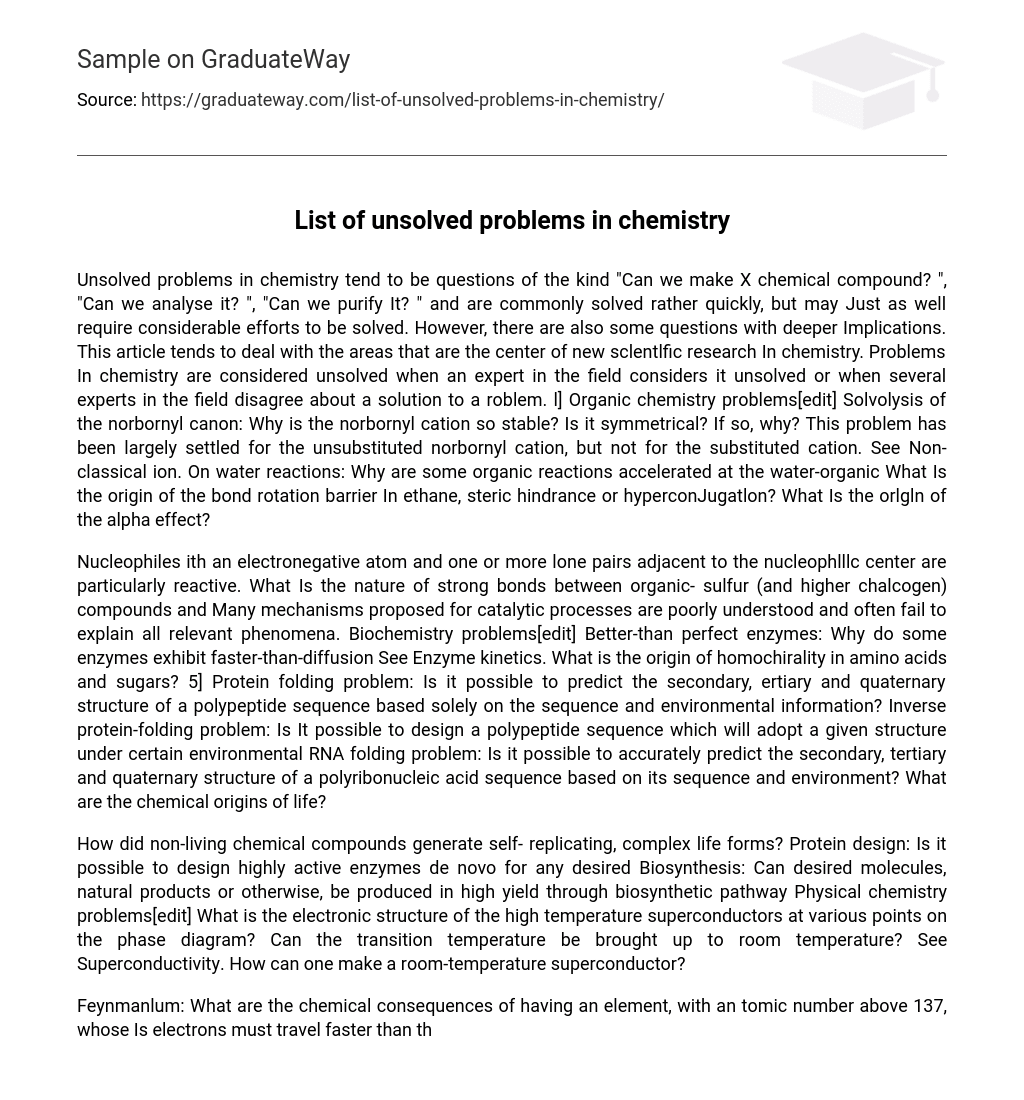Unsolved problems in chemistry tend to be questions of the kind “Can we make X chemical compound? “, “Can we analyse it? “, “Can we purify It? ” and are commonly solved rather quickly, but may Just as well require considerable efforts to be solved. However, there are also some questions with deeper Implications. This article tends to deal with the areas that are the center of new sclentlfic research In chemistry. Problems In chemistry are considered unsolved when an expert in the field considers it unsolved or when several experts in the field disagree about a solution to a roblem.
Organic chemistry problems Solvolysis of the norbornyl canon: Why is the norbornyl cation so stable? Is it symmetrical? If so, why? This problem has been largely settled for the unsubstituted norbornyl cation, but not for the substituted cation. See Non-classical ion. On water reactions: Why are some organic reactions accelerated at the water-organic What Is the origin of the bond rotation barrier In ethane, steric hindrance or hyperconJugatlon? What Is the orlgln of the alpha effect?
Nucleophiles ith an electronegative atom and one or more lone pairs adjacent to the nucleophlllc center are particularly reactive. What Is the nature of strong bonds between organic- sulfur (and higher chalcogen) compounds and Many mechanisms proposed for catalytic processes are poorly understood and often fail to explain all relevant phenomena. Biochemistry problems Better-than perfect enzymes: Why do some enzymes exhibit faster-than-diffusion See Enzyme kinetics. What is the origin of homochirality in amino acids and sugars?
Protein folding problem: Is it possible to predict the secondary, ertiary and quaternary structure of a polypeptide sequence based solely on the sequence and environmental information? Inverse protein-folding problem: Is It possible to design a polypeptide sequence which will adopt a given structure under certain environmental RNA folding problem: Is it possible to accurately predict the secondary, tertiary and quaternary structure of a polyribonucleic acid sequence based on its sequence and environment? What are the chemical origins of life?
How did non-living chemical compounds generate self- replicating, complex life forms? Protein design: Is it possible to design highly active enzymes de novo for any desired Biosynthesis: Can desired molecules, natural products or otherwise, be produced in high yield through biosynthetic pathway Physical chemistry problems. What is the electronic structure of the high temperature superconductors at various points on the phase diagram? Can the transition temperature be brought up to room temperature? See Superconductivity. How can one make a room-temperature superconductor?
Feynmanlum: What are the chemical consequences of having an element, with an tomic number above 137, whose Is electrons must travel faster than the speed of light? Is “Feynmanium” the last chemical element that can physically exist? The of nuclear-charge distribution. See the article on Extension of the periodic table beyond the seventh period and section Relativistic effects of Atomic orbital. How can electromagnetic energy (photons) be efficiently converted to chemical energy? (E. g. splitting of water to hydrogen and oxygen using solar energy. )





